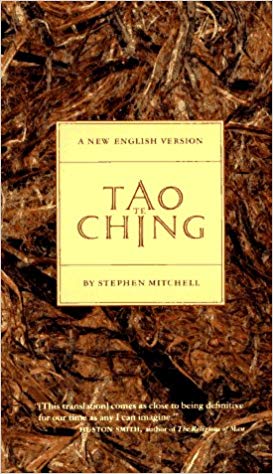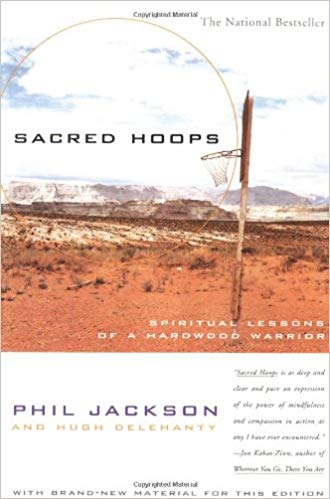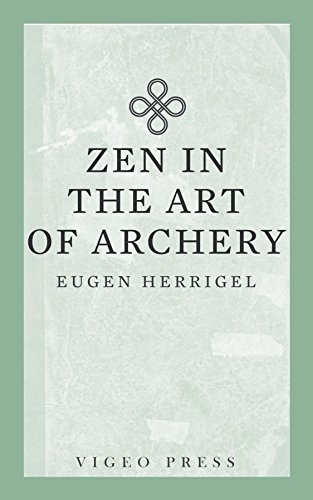Non Track-related Influences
by Steve McGill
Throughout my coaching career, my coaching methods have been influenced by sources outside the realm of track and field. Yes, I’ve attended a few coaching clinics over the years, and I’ve read the essential books on coaching hurdlers, including The Hurdler’s Bible by Wilbur Ross, The Science of Hurdling by Brent McFarlane. And if there is one person I would identify as my mentor when it comes to coaching, it would be Jean Poquette—Renaldo Nehemiah’s high school coach. But I wasn’t raised in the sport in an orthodox manner. For the most part, I learned by coaching myself. When it came to adjusting to the 42’s in college, that was all me by myself. So my independence is based on the fact that I’ve always had to rely on myself to figure things out as I go. In my college years, I learned to embrace the process of making mistakes, experimenting with various ways to correct the mistakes, and then moving forward with a decision based on what felt the best.
Unlike most track coaches, I didn’t major in a field that would lead to a career in coaching. I was an English major. I didn’t take classes in physical education, or physiology, or health science, or anything that would be logical for a future track coach. That’s because I didn’t have any plans of becoming one. As a result of my background as an English major and my lifelong love for reading, I don’t look at hurdling mathematically, like a lot of coaches do. I get confused when coaches use language that is very specific in regards to the geometry of hurdling or the physics of hurdling. Brent McFarlane’s book, for example, is a difficult read for someone like me. My mind is so extreme on the artistic side that I grapple mightily when it comes to the scientific side.
Another consequence of being an English major is that I never took classes that taught how the body’s major systems function. I know that if I ever seriously wanted to coach professionally, I would need to go back and learn all that stuff. But that’s not me. I don’t want, and don’t ever want, track to consume my entire life. I’m okay with the fact that there are coaches who know more than I do. I don’t claim, and never have claimed, to know everything. But I do know what works for me.
And one of the things that works for me is the artistic approach. I envision a hurdle race as being no different from a poem, with its emphasis on rhythmic continuity and adapting one’s rhythm to the spacing provided. A hurdle race is no different from a novel in that there are so many highs and lows, plot twists, opportunities for success and failure, etc. Hurdlers, the way I look at it, are poets, are storytellers; they are creative artists expressing themselves through movement in the same manner that writers express themselves through words. My job as the coach is to help the athlete to tell his or her story; my job is the same as an editor’s is for a poet or novelist.
In that regard, everything I read, even if it has nothing to do with the hurdles at all on the surface, is something I can incorporate into my coaching methods. Often, it happens subconsciously – so often, in fact, that I’ve learned to count on that happening. Here, I want to point out three books in particular that have had a major impact on how I coach and I why I coach the way I coach.
The first book I’d like to discuss is the Tao Te Ching—an ancient Eastern text that serves as the foundation of Taoism. I first read this book when I was in my late twenties, searching for answers to some of life’s complex questions. This simple book, consisting of 81 short teachings that read like poems (in the translation that I chose), spoke of a wisdom that I had always felt to be true, but had never heard validated outside of my own mind. In the book, the author, Lao Tzu, asserts that chasing after success and seeking ambitiously to conquer the world is just foolishness. The true leader, he says, leads by following. The most efficient worker does not work very hard at all. People do their best work when work feels like play. It’s a book full of paradoxes, explaining how everything we do in an attempt to make ourselves happy is actually adding to our misery.
In my further studies of Taoism, I came across the concept of “Wu Wei,” and this concept is what I was able to directly relate to hurdling. The term roughly translates into “non-action,” which is why many people disparage it as nonsense. The best action is to not act at all? Well, if you put it that way, of course it sounds like nonsense. But my interpretation of the term is that it means pure action—action that is free from all unnecessary strains and stresses, free from all wasted motions, action that is done in the spirit of play, free from expectations or the need to prove oneself. When I watched a lot of hurdlers at meets and on TV, I noticed that so many of them were getting caught up in making “power moves,” as I called them. They would lock the knee of the lead leg and drive their heel at the crossbar while ducking their head down. On the other side of the hurdle, they would snap down their lead leg forcefully, causing their upper body to stand straight up. In short, they put a whole lot of effort into getting over the hurdle. And if they hit hurdles, they just bulldozed them. No respect for the art form, no sense of rhythm and fluidity.
This concept of Wu Wei was suggesting that there was another approach one could take, and I decided I wanted to learn more about that approach and commit myself to it. Ever since then, my mission as a coach has been to eliminate all power moves in the hurdling action, to eliminate all pauses in the hurdling action, so that one of my hurdlers running over hurdles looks as smooth and fluid as water flowing over rocks. The idea is, when you’re fluid, you’re even more powerful than when you’re making an overt effort to be powerful. The reason being, you’re not fighting, you’re not straining. Your body doesn’t get twisted, doesn’t lose balance, doesn’t tilt to one side or the other. So, every bit of effort you exert is moving you forward down that track. Everything I teach in regards to sprinting mechanics and hurdling mechanics is based on the concept of being fluid and effortless. All else being equal, my hurdlers will beat your hurdlers not because they’re better than your hurdlers, nor because they work harder than your hurdlers, but because they waste less effort than your hurdlers. Therefore, your hurdlers, over the course of a ten-hurdle race, will eventually fatigue and make a mistake. Mine won’t.
The second non-hurdle-related book that has influenced how I coach hurdlers in Sacred Hoops by former professional basketball coach Phil Jackson. I first read this book shortly after it came out in the mid-90’s, as it chronicles the first three-peat by the Chicago Bulls in 1991, 1992, and 1993. Jackson would later go on to win three more championships with the Bulls, and then five more with the Los Angeles Lakers, making him one of the most celebrated coaches in the history of professional basketball. In the book, he also discusses his outside influences, and how they affected his coaching methods. Jackson employed a lot of unorthodox techniques, such as not calling a timeout when his team was getting blasted, having the team meditate together before practice, and, most famously, going with the triple-post (triangle) offense as the team’s primary offensive system for the majority of games, which meant running no plays.
The reason Jackson would refuse to call timeout when his team was falling behind is because he wanted his players to learn to trust themselves, and trust each other, instead of looking to him to provide all the answers. He didn’t want his players looking to the sideline during times of crisis. Whatever isn’t working, figure out the solution, right there, right now, on the court, together. That way, the players gained confidence in their ability to negotiate difficult landscapes. Their instinctive abilities sharpened: they knew when to make a certain pass to a certain teammate, when to go for the steal, when to curl off a screen vs. when to step back for the three-point shot. There was no “right” or “wrong” based on a playbook; players learned to trust their instinctive feel for the game, and for each other. What Jackson understood, unlike many coaches who feel the need to control every situation, was that players can feel things that the coach cannot see. The players are the ones out there playing, so the coach must encourage the players to trust themselves. Otherwise, when the moments of crisis occur, the players will shrink. They’ll hesitate. And that instant of hesitation can be the difference between victory and defeat.
In coaching my hurdlers, I’ve adopted the same approach. After every rep in a training session, I’ll ask the hurdler how that rep felt. Beginners often will say “I don’t know” or “okay” or something similarly vague. But I’ll keep asking, and eventually they’ll understand that they must learn to listen to what their body is telling them. They must be able to articulate what their body is telling them. Even though I can film every rep on my iPhone, the video does not provide instant feedback. How the body feels is instant feedback. In a race, the athlete needs instant feedback. You can’t go back and watch the video during a race; you have to be able to react in that moment; you have to be able to adjust in that moment; if you make a mistake, you have to be to figure out what caused it and how to correct it in that moment. Like I always tell my athletes, when the gun goes off, I’m in the bleachers. Can’t help ya bruh.
The triangle offense was a system of basketball that involved constant ball movement and constant player movement. Players had a myriad of options of what to do with the ball once it was in their hands. This way, every player on the court was a threat to score, not just the star players—Michael Jordan, with the Bulls, and then Shaquille O’Neal and Kobe Bryant with the Lakers. Prior to deciding to implement the offensive system, Jackson had grown tired of all the “power basketball” in the NBA, in which one or two players dominated the ball while the rest of the players on the court stood around and watched. Even with someone of Jordan’s talent, defenses ultimately could key on him and stop him, knowing none of the other players would pick up the slack.
That idea of constant ball movement and constant player movement, of fluid motion throughout an offensive possession, mirrored what I was seeking to accomplish in hurdling. On Jackson’s teams, the floor was balanced. There wasn’t a strong side and a weak side. Every player on the court was only one pass away from receiving the ball. Similarly, I had grown frustrated with seeing so many hurdlers relying on their lead leg for all their speed and power all the way down the track. Some hurdlers were literally running sideways the whole race, with their trail-leg hip never facing the front. Now, I didn’t think that the trail leg was more important than the lead leg, but that it was equally important. All this power-hurdling wasn’t fun to watch. It wasn’t artistic. When thinking back to Renaldo Nehemiah’s 12.93 race, it seemed like nobody hurdled like that anymore. To this day, when I’m coaching a hurdler, or watching one of my hurdler’s compete, I want to feel like I felt when I first saw that Nehemiah footage—whoa! Let’s goooooo!!! That only happens when the lead leg and trail leg are working together as a single unit, when the lead arm and trail arm are working together as a single unit, when the lead leg and lead arm and trail leg and trail arm are working together as a single unit. When there are pauses in the action—lead leg, pause, then trail leg, that’s a no-go for me. That’s not how we do. Being fluid makes it easier to be fast; being balanced makes it easier to be fast. When you’re fluid and balanced, you don’t have to work to be fast. Speed happens to you; it comes out from within you, which is how it should be.
A third book worth mentioning here is Zen in the Art of Archery by Eugen Herrigel, which is considered to be one of the classic Western texts on the Eastern philosophy known as Zen Buddhism. In the book, the author, a German, travels to the East to learn how from a Zen master how to shoot a bow and arrow. One of the most important things this book provided for me was an understanding of how the learning process takes place when mastery of a technical skill is involved. These are the seven steps, based on my reading of the book:
- The coach teaches the athlete. At this point, the athlete is a student learning from the coach, who possesses more knowledge.
- The athlete teaches the body. At this point, the athlete possesses intellectual knowledge of what to do, but the concepts are still foreign to the body, so the athlete must constantly instruct the body how to execute the movements.
- Steps 1 and 2 are repeated over and over again for each aspect of technique.
- Mini-epiphanies occur as the body starts to “get it,” and is able to correctly do the movements without the athlete consciously telling it to.
- In practice, the body is able to perform all aspects of technique correctly without conscious thought intervening.
- In races, the body gradually learns to perform all aspects of technique correctly without conscious thought intervening.
- Step 6 is performed under the most stressful, high-pressure competitive conditions.
Another major lesson I learned from reading this book is the concept that Renaldo Nehemiah would later phrase in a 2005 interview for this website as being “one with the hurdle.” In the book, Herrigel learns that as long as he sees the target as a target, he will never achieve effortless accuracy. He will always be fighting himself, and he will always see the target as a “challenge” that he must overcome or conquer. When he finally learns to let go, and become one with the target, he feels no distinction between himself and the target; also, he feels like his bow and arrow are an extension of himself, not tools that he uses to “hit” the target.
So, when Renaldo said that a hurdler must “be one with the hurdle,” he was saying that, to put it in my own words, hurdlers can’t look at hurdles as obstacles, because just the very act of viewing them as obstacles will cause the athlete to hold back, however slightly. Or, if not hold back, the athlete will be overly aggressive in an attempt to dominate the hurdle, which he or she views as an opponent, similar to how a running back in football will look to dominate the defender attempting to tackle him to the ground. To be one with the hurdle is to recognize the hurdles as key elements in the dance, and to recognize that hurdling, ultimately, is a dance, both in the physical sense and the spiritual sense. When a hurdler becomes one with the hurdle, there is no fear, no doubt, no pressure, no hope, no desire, no tension. There is just pure action.



